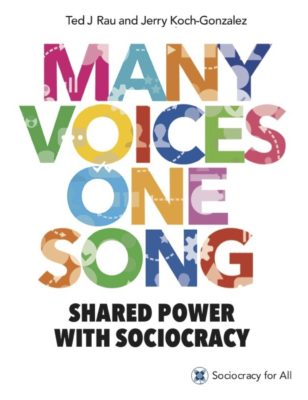Category: Decisions and Power
Sociocracy has specific methods and practices for ensuring that decision-making and power are linked and shared. Democracy was originally revolutionary by allowing the common citizen to make decisions using majority vote to make decisions. But it has no structure for ensuring that those decisions are implemented. A sociocratic system of communications and control would ensure better decision-making and give more power to democratic values.
Having a vision, mission, and aim are very important in bringing coherence to your organization. You can call them by different names but combining them or collapsing them is not the best idea. It can lead to confusion and allow you to miss or avoid one or another of them. And the different names may confuse you as well.
Vision
The vision is your dream. What you want the world to be. On a grand… Read More . . . “Vision, Mission, and Aim” Often heard: “We don’t use sociocracy or dynamic governance; we use consensus.” Or, “We don’t use dynamic governance; we use non-violent communication (NVC).
The simple problem with these oppositions is that neither consensus nor NVC are governance methods. They don’t come with a set of principles or practices for structuring an organization, managing operations, and ensuring that the appropriate people are making the necessary decisions.
Consensus is a method for making decisions, just like majority… Read More . . . “Equating Consensus and Non-Violent Communication (NVC) with Governance” A Circle Meeting at Endenburg Elektrotechniek
On the Endenburg Elektrotechniek site, an objection is defined as a “well-founded counter-argument”. In 1972 with a group of parents forming a cooperative school, predominantly young Yale faculty members who had moved to town to join a new college. We were committed to diversity and having a hard time recruiting people of color and from a different socio-economic class.
We were having an equally hard time finding appropriate space that we could afford. This was long before charter schools so we were funding the whole thing ourselves. We… Read More . . . “My Pivotal Consensus Experience” In dynamic governance there is no option to stand aside — the only options are consent or object. If you don’t have tangible objections, ones that can be teased out and addressed, then you consent. It maybe a passive consent, “I don’t see any reason not to do this”, or an active consent, “I really think this is a good idea.” Both are consent.
We have members who insist on having a stand aside option,… Read More . . . “Consent & Responsibility” A wonderfully readable update on brain research is Jonah Lehrer’s How We Decide that looks at how our emotions affect decisions and what the brain tells us about it. Lehrer worked in the lab of Nobel Prize-winning neuroscientist Eric Kandel, is editor-at-large for Seed Magazine, and publishes regularly in major magazines and newspapers. He has both the education to interpret brain research and the ability to write about it clearly — welcome ability. And the… Read More . . . “How We Decide and Why It Matters” 
